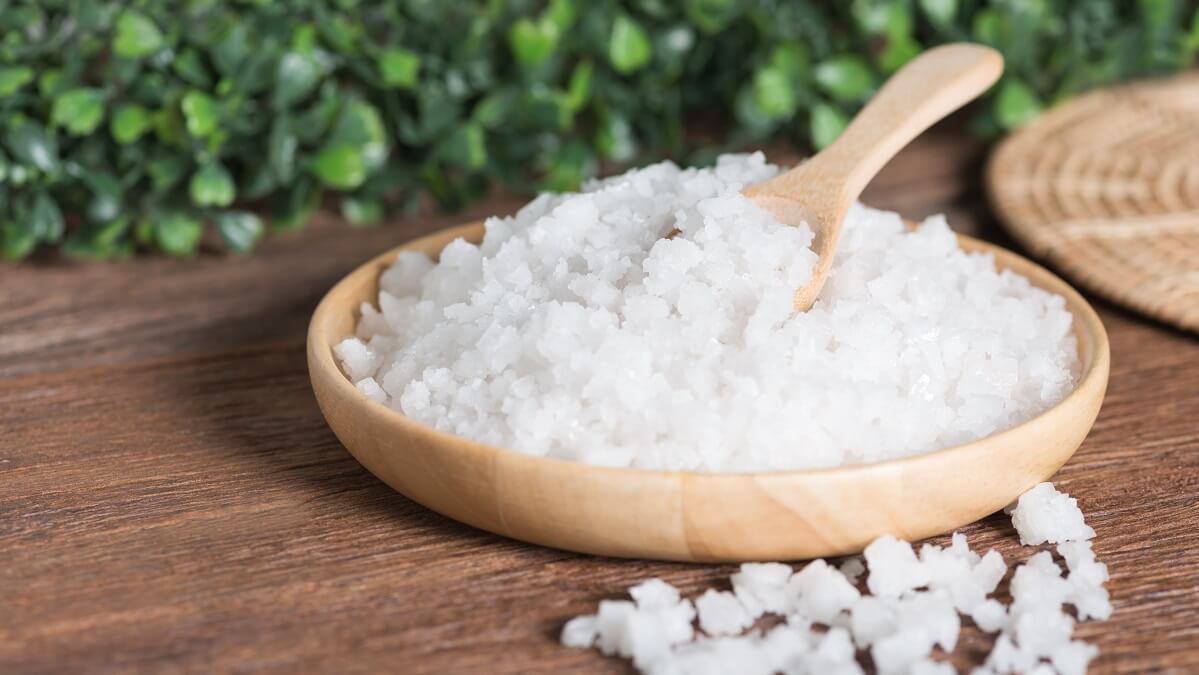While the scientific jury is largely out on the benefits of Epsom salts (or salt, see below), the use of this wonder salt (or salts, see above) has been one of the more common folk remedies for pain, eczema, easing arthritis and even removing splinters.
Epsom salts are magnesium sulphate heptahydrate originally obtained by boiling down mineral waters at Epsom, England.
“It is quaintly referred to in the plural – Epsom salts instead of Epsom salt,” writes Paul Ingraham for Pain Science. “But it’s just one kind of salt, and other than tradition, there’s no more reason to say ‘salts’ than there is to say ‘please pass the table salts’. It’s just an odd affectation, and both the singular and plural form are fine.”
Most of us have a box of Epsom salt in our cupboards, ready for anything from a soothing foot-bath after a long day’s hike or as a laxative. But does it really work for everything it is given credit for fixing?
“Does an Epsom salt bath actually do anything? Does brining yourself like a turkey do any good? Can you pickle your pain away? Is there any plausible way that Epsom salts could have an effect on your sore muscle tissue, or on the healing of injuries?” asks Mr Ingraham.
“A search for scientific evidence concerning Epsom salt baths is disappointing. There are basically no studies of their effect on body pain,” he says.
“Folk remedies are often neglected by researchers, but not usually so completely. There are usually at least a few experiments testing popular remedies kicking around. But there appears to be simply nothing at all published about alleviating aches and pains by any means. Apparently, researchers just aren’t interested in studying the effect of Epsom salts on muscle pain, or (more likely) they simply can’t get funding for the work.”
Magnesium is the active ingredient in Epsom salt. We should get most of the magnesium our body needs in the food we eat. However, poor diets mean many people are lacking in magnesium. Studies have shown that magnesium and sulphate may pass easily through the skin when soaking in an Epsom salt bath.
So, what’s the ideal Epsom salt ‘serving size’?
Add two cups of Epsom salt to a standard-size bathtub of warm water, pouring into the running water to help it dissolve faster. Stir the water with your hand to help dissolve any remaining grains. It’s best to soak for around 10-12 minutes. Any longer and there could be adverse effects.
What are the benefits? Here are a few theories.
Restore magnesium levels in your body
Once magnesium passes through your skin, it penetrates the muscles and gets into your bloodstream.
Ease aches and pains
It is widely believed that an Epsom salt bath can help soothe muscle aches. Some studies show that magnesium sulphate can be absorbed by the skin and help block pain receptors. But another study on applying magnesium sulphate to the skin failed to prove elevated blood levels of magnesium. So it may just be the warm water that helps to soothe your aching body parts. Hey, whatever works …
Soothe arthritis
Used as a compress, Epsom salt can help soothe aching joints. Dissolve two cups of Epsom salt into several litres of water, then either bathe the affected joint or apply a warm compress to the area.
Decrease inflammation and other chronic conditions
Magnesium deficiency contributes to increased inflammation and other chronic conditions, such as cardiovascular disease, hypertension, diabetes, joint pain and stress. Increasing your magnesium levels should help to relieve these conditions.
Ease stress
Magnesium helps to produce serotonin, which elevates your mood and relieves muscular tension.
Relax muscles and relieve cramps
Studies show that magnesium decreases inflammation and relieves muscular soreness and can help to minimise the effect of painful muscular cramps.
Detox dip
The sulphate component of Epsom salt helps to draw toxins and heavy metals from your body. While soaking is a gentle way to detox, sitting in a bath for too long can make you feel nauseous or give you a headache.
Constipation relief
An Epsom salt bath can help ease stubborn bowels or the salt can be mixed with water and consumed as a drink.
Foot soak
Sure, it relaxes your feet but there are some other benefits to Epsom salt foot baths, such as removing splinters, treating toenail fungus and Athlete’s Foot and easing gout pain or sore bones and muscles in your feet.
Ease eczema and psoriasis
The National Eczema Association in the US recommends Epsom salt to help soothe the dry, itchy patches of eczema. It can also help remove psoriasis scales and ease the associated itching.
Healthy heart
Magnesium improves circulation and keeps arteries elastic, so can improve heart health, prevent heart disease and strokes, regulate your heart beat and blood pressure.
Scrub off dead skin
Mix with your favourite essential oils and use as a skin scrub.
Soothe sunburn
A lukewarm Epsom salt bath can help ease the sting of sunburn.
Whatever you do, ensure you have real, naturally produced Epsom salt, not synthetic salt. That might cost you a little bit more, but the difference is significant.
What do you use Epsom salt for? Do you swear by the benefits? Share your thoughts in the comments section below.
Also read: A long-term high-fat diet can shrink your brain

